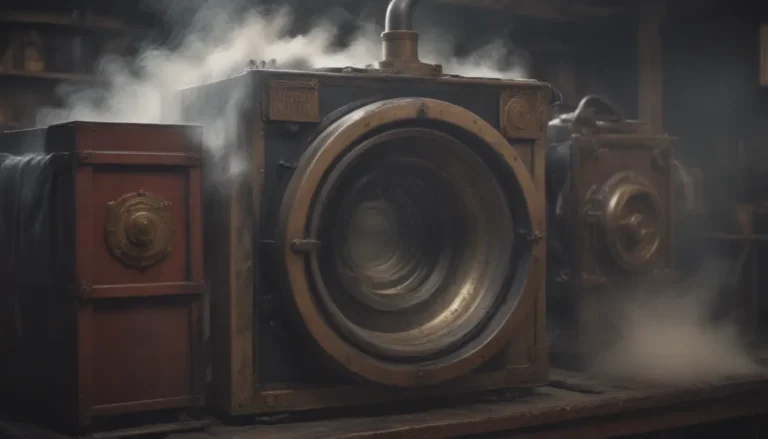The Ultimate Guide to Flying Ants: Identifying, Preventing, and Eliminating Them

Flying ants invading your home can be an annoying issue to deal with. But did you know that they could also be a sign of a larger ant infestation waiting to happen? These winged pests are mature ants looking to breed and start new colonies, leading to an increase in ant activity around your home. In this comprehensive guide, we will explore everything you need to know about flying ants, including how to identify them, differentiate them from termites, and effectively get rid of them.
What are Flying Ants?
Flying ants, also known as alates, are sexually mature ants that develop wings as part of their breeding cycle. They can be either male or female and are not a separate species from regular ants. One common type of flying ant is the carpenter ant, known for its destructive nesting habits. These ants are on the lookout for mates and new breeding grounds, often finding their way into homes through open windows, doors, or cracks along the walls.
How to Identify Carpenter Ants and Termites
It’s easy to confuse flying ants, especially carpenter ants, with termites. However, there are key differences that can help you distinguish between the two:
- Appearance: Carpenter ants are often narrower and darker than termites. While some carpenter ants may be larger than termites, size alone is not an accurate way to determine the species.
- Behavior: Carpenter ants are more likely to be seen in the open, especially while foraging for food. Termites, on the other hand, need moisture to survive and are usually found near their water source.
- Nesting Habits: Termites eat the wood they tunnel in, while carpenter ants only nest in it without consuming it. Look for frass, a mixture of wood dust, soil, and insect parts, beneath openings to carpenter ant nests.
By observing these characteristics, you can determine whether you are dealing with carpenter ants or termites in your home.
Why Do Ants Fly?
Flying ants, whether carpenter ants or termites, grow wings as part of their reproductive cycle. The presence of winged ants indicates the presence of reproductive males and queens in an ant colony. These ants swarm to mate, after which the males die, and the queens seek out nesting sites, dropping their wings in the process. While seeing a winged ant indoors during the summer may not always indicate an infestation, flying ants spotted in winter are likely nesting within the structure, requiring prompt action to prevent further issues.
How to Get Rid of Flying Ants
If you discover a carpenter ant infestation in your home, there are steps you can take to eliminate them effectively:
- Repair Or Replace Rotted Wood: Carpenter ants prefer nesting in wet, damp, or rotting wood. By repairing or replacing damaged wood, you can remove the nest and deter future infestations.
- Use Insecticide: Insecticides can help control and kill ants that have established nests indoors. Dust, bait, spray, or boiling water can be effective solutions, but always follow the label directions and safety precautions.
- Call a Professional: If your ant infestation is severe, consider seeking professional help. Ant exterminators can provide more powerful insecticides for effective control. Termite infestations may require fumigation and whole-home treatment, which can be more costly but necessary for complete eradication.
When to Call a Professional
Calling a professional pest control service may be necessary if your flying ant or termite infestation is beyond your control. Here’s when it’s time to consider professional help:
- Severe Infestation: If the infestation is widespread or persistent, a professional exterminator can provide effective solutions.
- Cost-Effective Treatment: While professional services may be more expensive upfront, they can save you money in the long run by preventing further damage to your property.
- Complete Eradication: Professional exterminators have the expertise and tools to eradicate ant colonies and prevent future infestations.
Conclusion
Flying ants can be a nuisance in your home, but they can also indicate a more significant ant infestation issue. By understanding how to identify flying ants, differentiate them from termites, and effectively eliminate them, you can protect your home from potential damage and keep your living space pest-free. Remember to take preventive measures to reduce the risk of future infestations and seek professional help when necessary. With these tips and strategies, you can tackle flying ant problems head-on and maintain a comfortable, pest-free environment in your home.
Remember: an ounce of prevention is worth a pound of cure when it comes to flying ants and other pests. Stay informed, stay proactive, and enjoy a pest-free home all year round!
Sources:
– Harvard Forest, Hahn, Jeffrey and Stephen Kells. Carpenter ants. University of Minnesota Extension. Carpenter Ants. University of Kentucky College of Agriculture, Food, and Environment. Pests in Gardens and Landscapes. Agriculture and Natural Resources, University of California. Flying ants vs. termites. What’s the difference? Angi.





